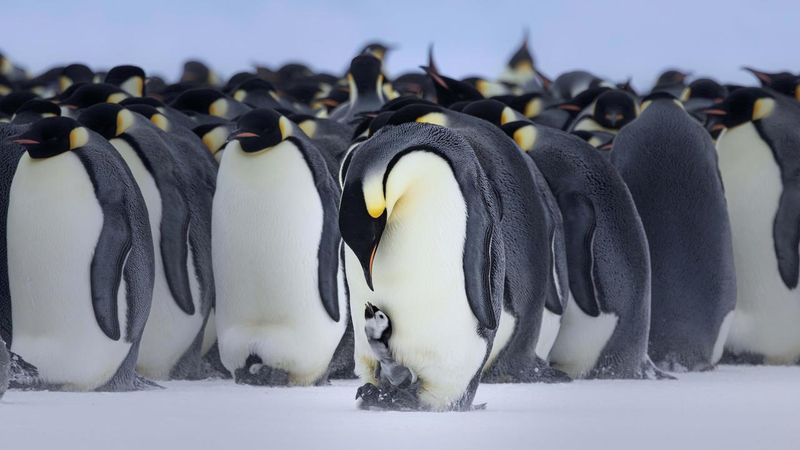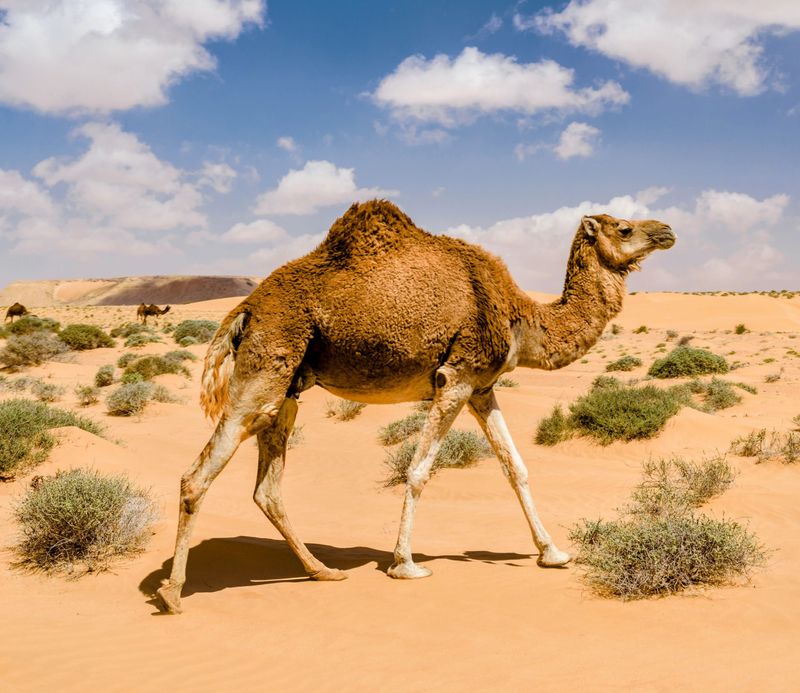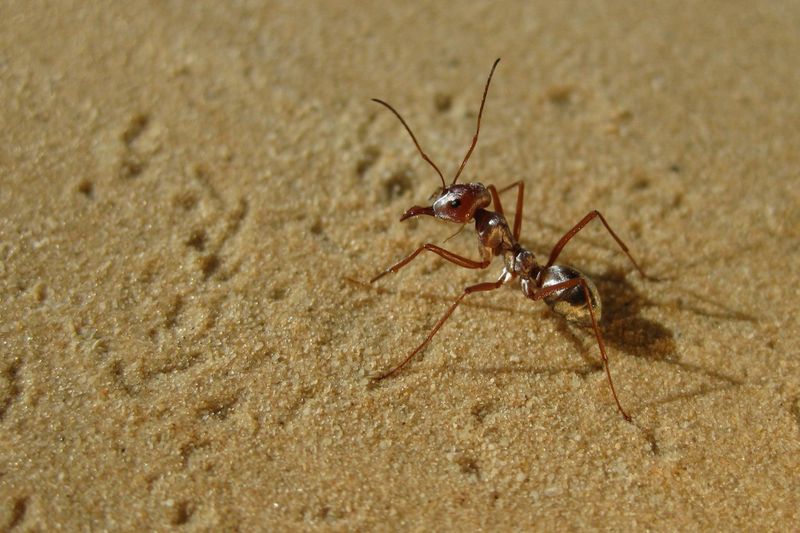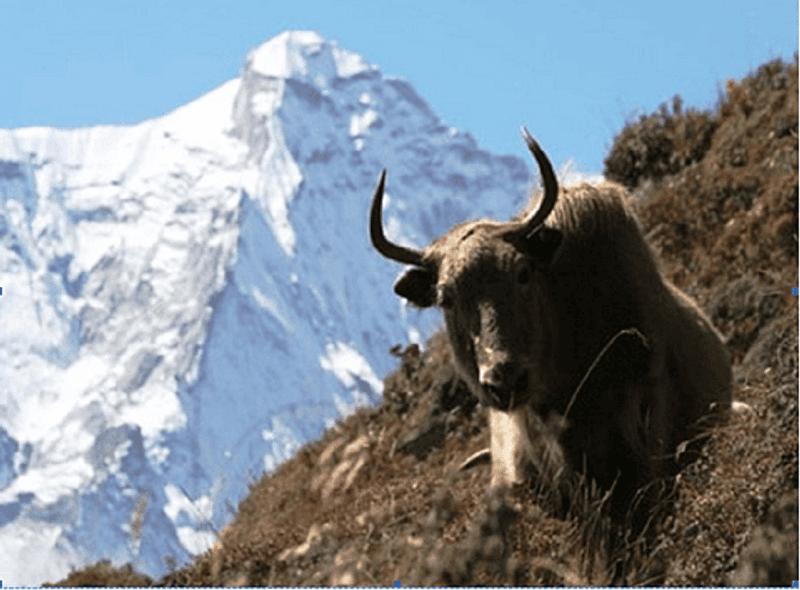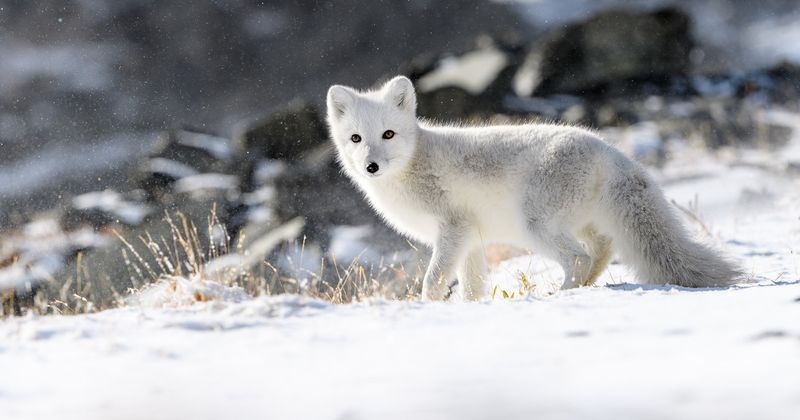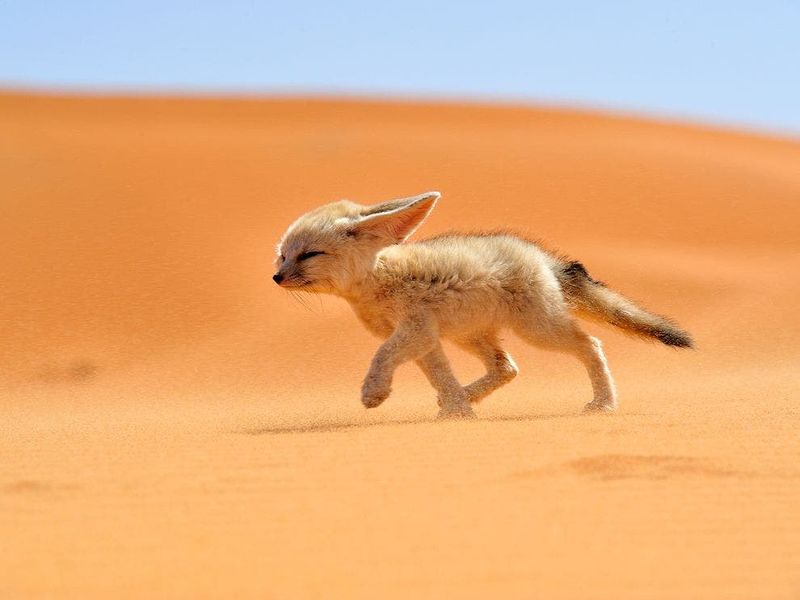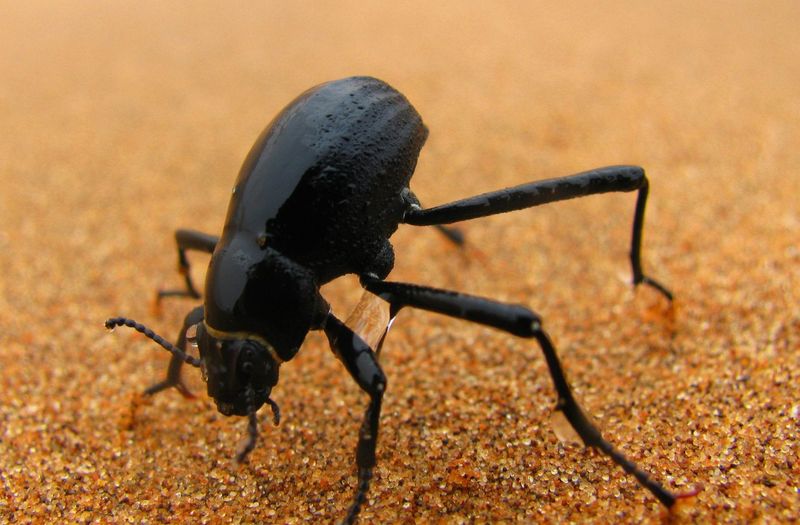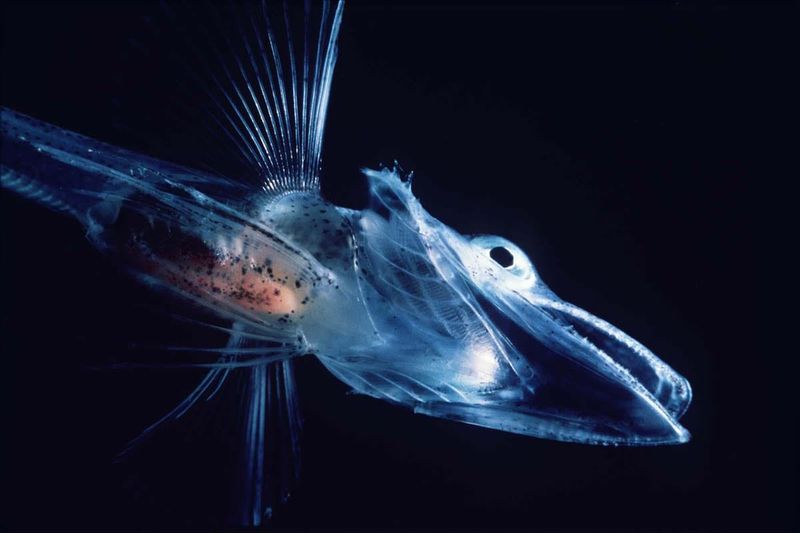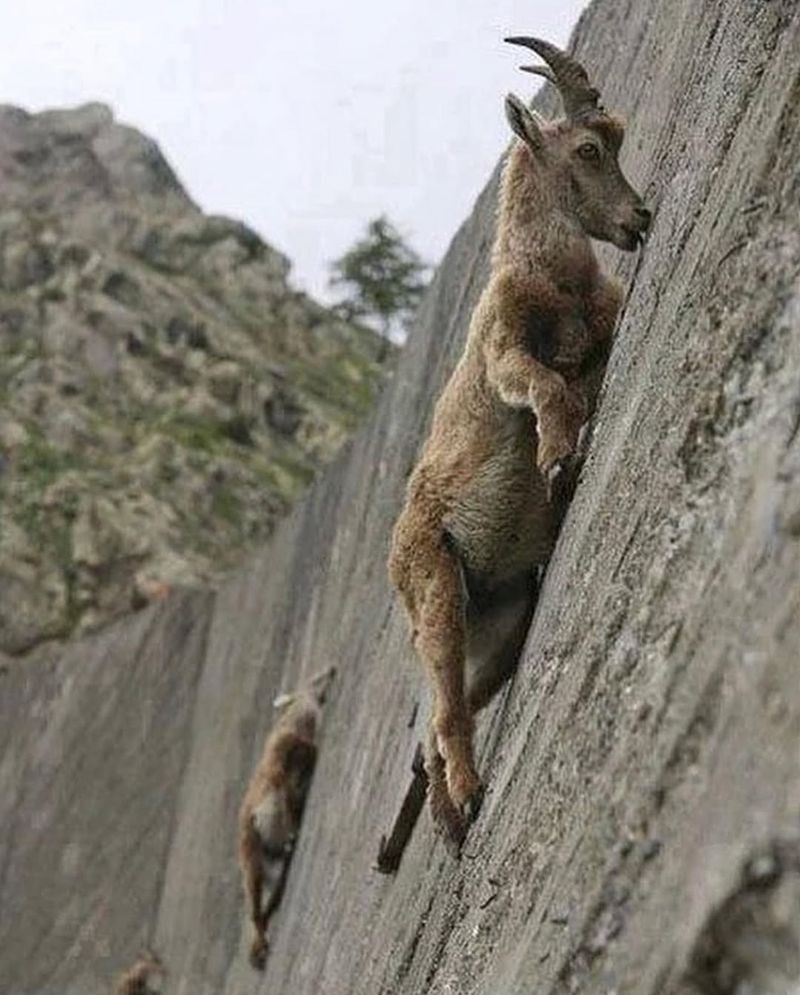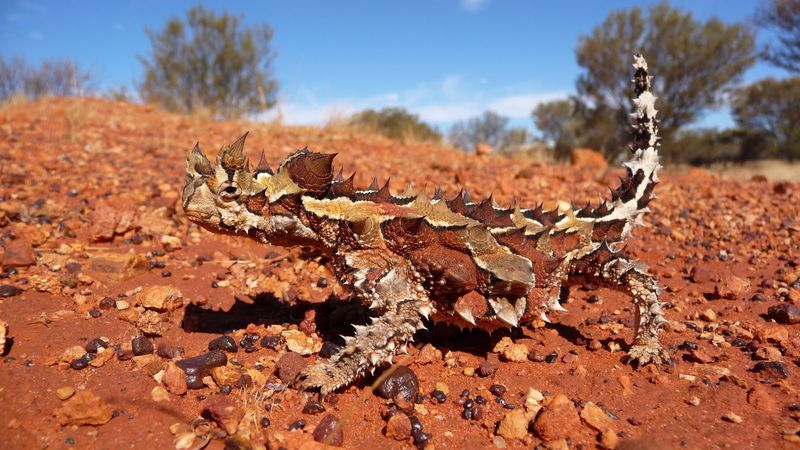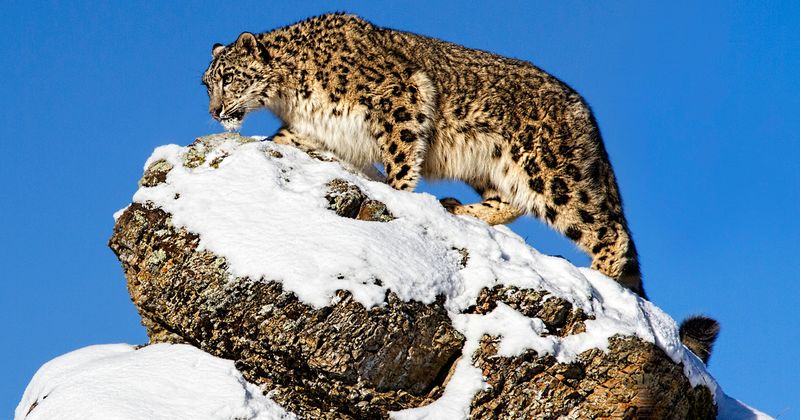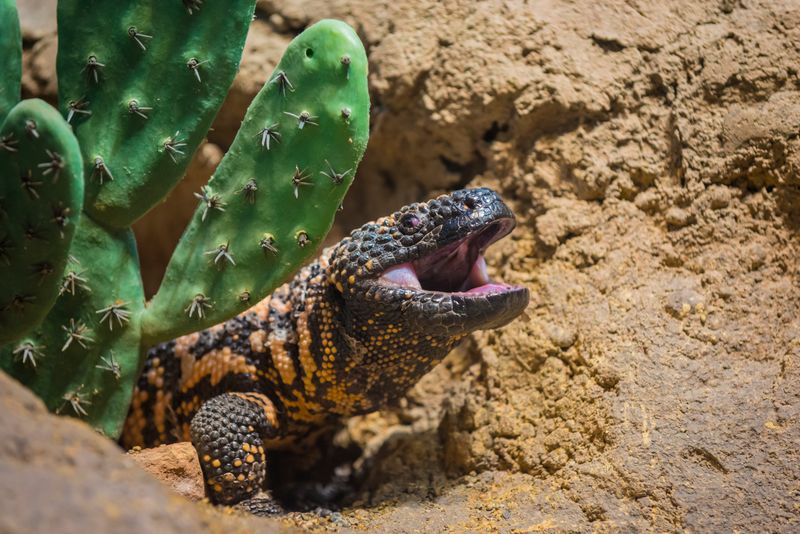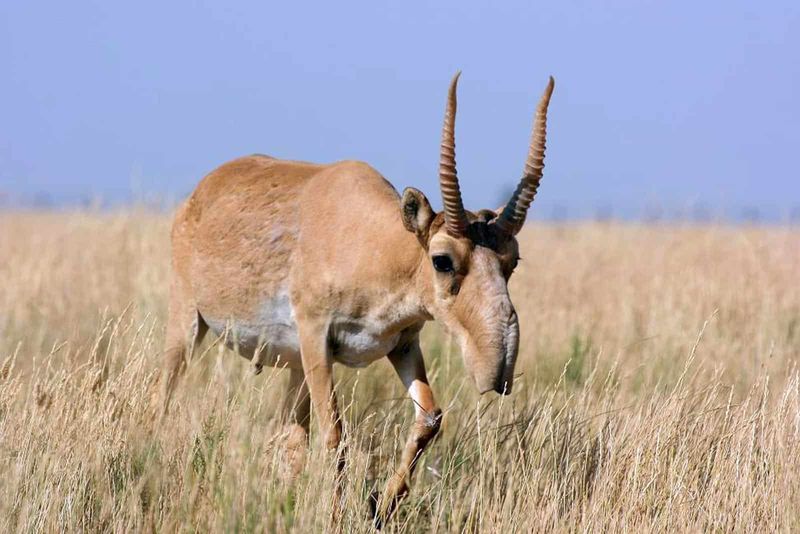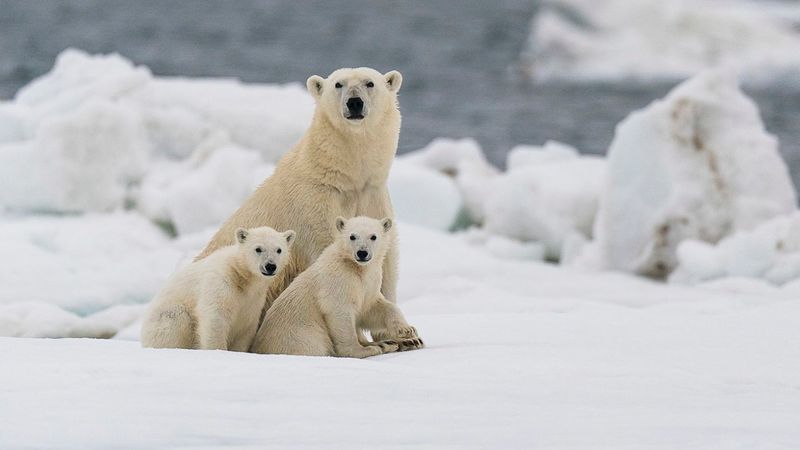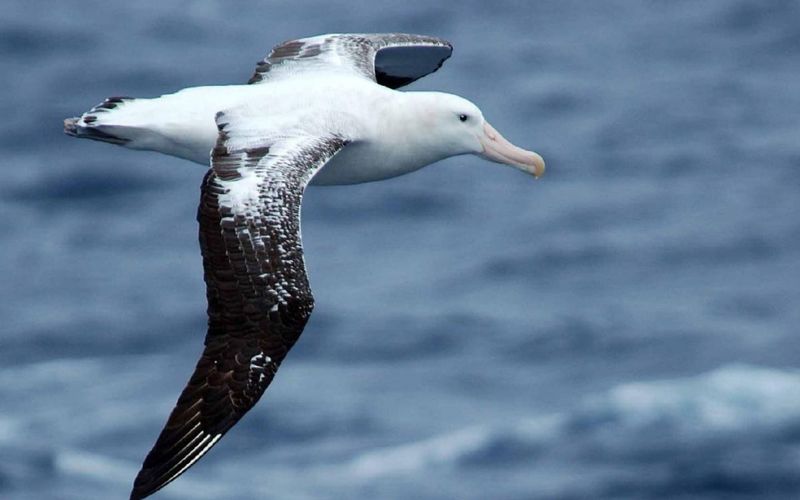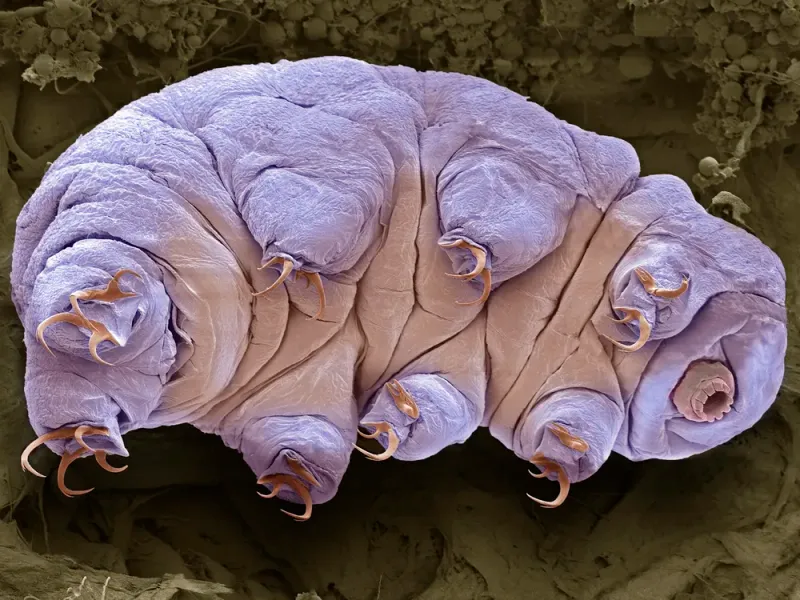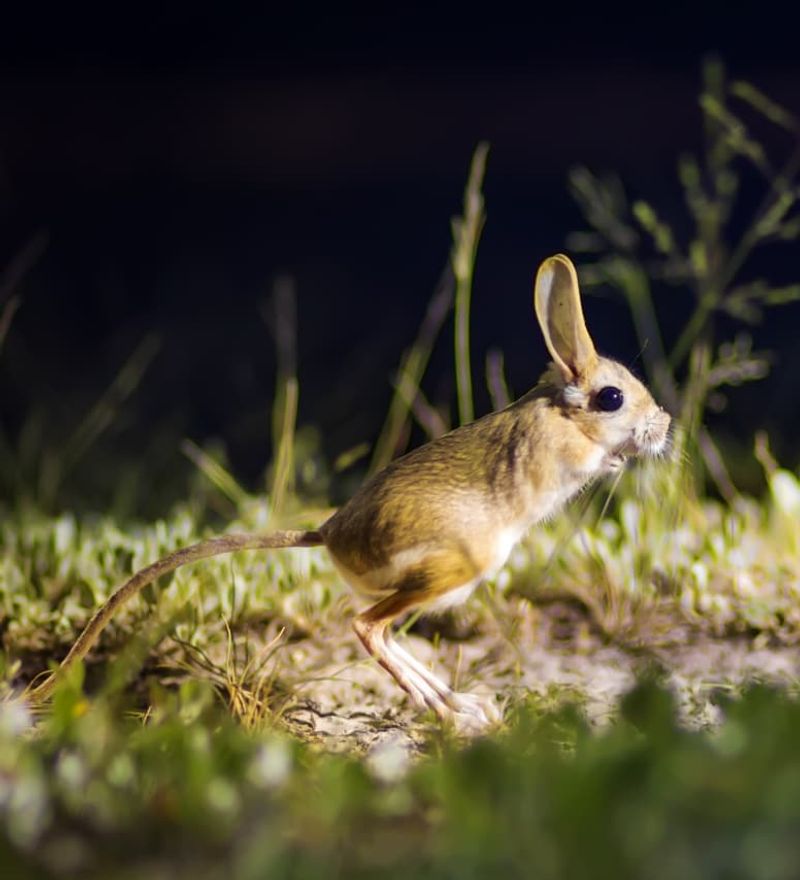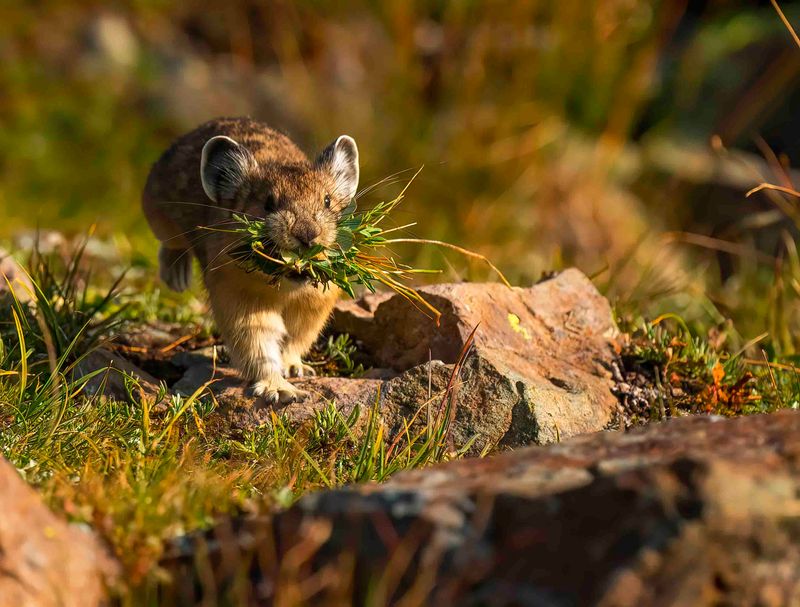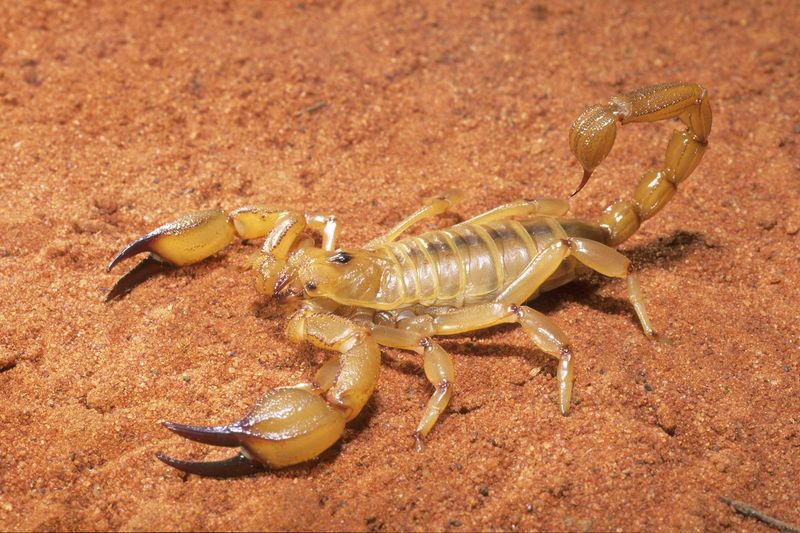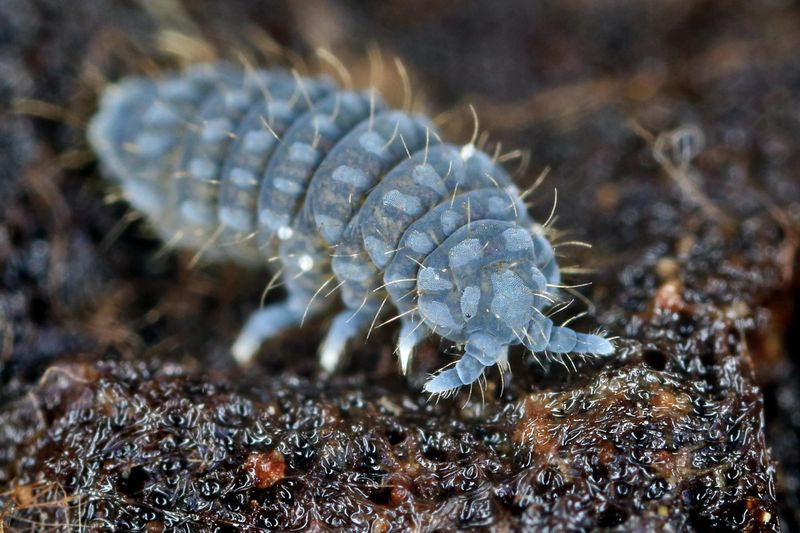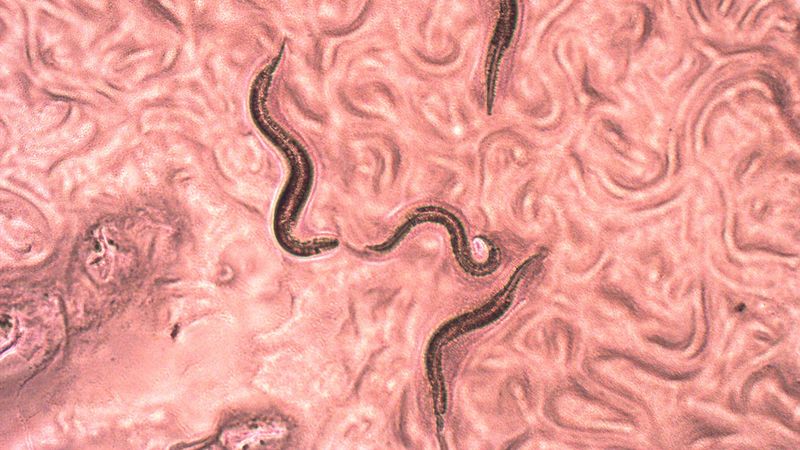From frozen tundras to scorching deserts, some animals have evolved extreme adaptations to live where most life would never dare. Here are animals that survive—and thrive—in the harshest environments on Earth.
Emperor Penguin
Emperor penguins are iconic symbols of endurance and teamwork. These flightless birds brave the brutal Antarctic winters, where temperatures plummet to -76°F (-60°C). To combat the cold, they huddle together in large groups, taking turns being on the outside. Their unique social structure and thick layers of blubber and feathers provide essential insulation. Emperor penguins also embark on lengthy treks across the ice to reach breeding grounds. Their ability to dive deep into icy waters in search of food is astounding, showcasing their adaptation to one of Earth’s most unforgiving climates.
Camel
Camels, often dubbed the “ships of the desert,” are perfectly adapted to life in arid environments. Their humps store fat, not water, providing energy reserves for long journeys without food or water. These majestic creatures have long eyelashes and closable nostrils to protect against sandstorms. Their unique ability to regulate body temperature minimizes water loss. With their broad, padded feet, camels traverse hot desert sands with ease. Their remarkable endurance and resourcefulness have made them invaluable companions for desert dwellers for thousands of years.
Saharan Silver Ant
The Saharan silver ant is a true master of the desert. These ants brave the blistering heat, foraging during the hottest part of the day when temperatures soar to extreme levels and predators retreat. Their metallic bodies reflect sunlight, reducing heat absorption and allowing them to stay active in the sun. Speed is their ally, as they scurry across scorching sand, quickly locating food before it’s too late. With an astonishing ability to withstand temperatures up to 128.5°F (53.6°C), they are one of the most heat-tolerant terrestrial animals.
Yak
Yaks are the hardy beasts of the Himalayas. With thick, warm fur and powerful lungs, they thrive in frigid temperatures and high altitudes where oxygen is scarce. These sturdy animals provide essential resources like milk, meat, and wool to the people living in these remote regions. Their ability to graze on sparse vegetation in rocky terrains demonstrates their incredible adaptability. Yaks are also known for their gentle and calm demeanor, making them reliable companions for the nomadic herders who depend on them for survival in such inhospitable environments.
Arctic Fox
Arctic foxes are masters of survival in the polar extremes. Their compact bodies, dense fur, and furry paws provide excellent insulation against freezing temperatures below -58°F (-50°C). Their white winter coats blend seamlessly with the snow, offering camouflage from predators. In summer, their fur changes to a brown or gray, matching the tundra’s muted tones. Arctic foxes are opportunistic feeders, scavenging for food, which helps them endure the barren landscape. Their keen sense of hearing aids in locating prey beneath the snow, making them formidable hunters.
Fennec Fox
The Fennec fox, with its endearing appearance, is a desert dweller extraordinaire. Its oversized ears serve a dual purpose: they dissipate heat and amplify sounds, helping it locate prey. The fox’s thick, sandy-colored fur insulates against cold desert nights and provides camouflage during the day. Adapted to a life with scarce water, Fennec foxes rely on moisture-rich food to stay hydrated. Their underground burrows provide shelter from the sun and predators. Agile and curious, these small foxes embody the spirit of desert survival with their resourcefulness and adaptability.
Namib Desert Beetle
The Namib Desert beetle is an ingenious water harvester. Living in one of the driest places on Earth, it gathers precious moisture from the morning fog. The beetle’s textured back aids in condensing fog droplets, which then roll down into its mouth. This clever adaptation allows it to thrive where water is scarce. By digging into the sand during the heat of the day, this beetle avoids the extreme temperatures. Its lifecycle is synchronized with the desert climate, ensuring its survival against all odds in an environment that challenges life itself.
Icefish
Icefish, native to the chilly Antarctic waters, possess a unique adaptation: transparent blood. This lack of hemoglobin might seem like a disadvantage, but it allows them to thrive in their frigid habitats. Their blood contains antifreeze proteins, preventing ice crystals from forming and ensuring their survival in sub-zero temperatures. Icefish also have larger hearts and blood vessels to compensate for the low oxygen levels. Their diet consists mainly of krill and other small marine creatures, showcasing their role in the Antarctic ecosystem. These remarkable fish are true wonders of adaptation.
Alpine Ibex
The Alpine Ibex is an expert climber, thriving in the steep, rocky terrains of the European Alps. With hooves designed for gripping, these mountain goats scale near-vertical cliffs to escape predators and find food. Their extraordinary balance and agility allow them to navigate precarious ledges with ease. The ibex’s diet consists of grasses and herbs found in these inhospitable areas. During winter, they descend to lower altitudes where food is more accessible. Their incredible climbing skills and adaptability make them a testament to survival in one of nature’s most challenging landscapes.
Thorny Devil
Native to Australia’s arid desert, the Thorny Devil is an extraordinary reptile. Its spiky skin not only deters predators but also serves as a water collection system. Early morning dew condenses on its body, channeled by grooves directly to its mouth. The Thorny Devil’s diet consists mainly of ants, which it collects with its sticky tongue. With its unique gait and ability to change color for camouflage, this lizard is a master of desert survival. Its slow, deliberate movement helps conserve energy, enabling it to thrive in a place where resources are scarce.
Snow Leopard
The elusive Snow Leopard, known as the “ghost of the mountains,” is a master of camouflage and stealth. Inhabiting the rugged peaks of Central Asia, these solitary big cats are built for survival in icy, high-altitude environments. Their thick, spotted fur blends perfectly into the rocky, snow-covered terrain, providing excellent camouflage. With powerful limbs and long tails for balance, snow leopards are agile hunters capable of taking down prey much larger than themselves. Despite their solitary nature, these majestic creatures play a crucial role in the ecosystem, maintaining balance in their remote habitats.
Gila Monster
The Gila Monster, one of the few venomous lizards, is an expert at conserving resources in the harsh deserts of the American Southwest. Its vibrant scales serve as a warning to potential predators. The Gila Monster stores fat in its tail, allowing it to survive long periods without food. It emerges during cooler times of the day to avoid the searing desert heat. This slow-moving reptile relies on its powerful bite to subdue prey, making the most of scarce opportunities. Despite its fearsome reputation, the Gila Monster is a shy creature, avoiding confrontation when possible.
Saiga Antelope
The Saiga Antelope, with its distinctive bulbous nose, is a marvel of evolutionary adaptation. In the vast, windswept steppes of Central Asia, this nose serves multiple purposes: filtering out dust and warming frigid air. The saiga’s ability to migrate long distances in search of food and water is essential to its survival in such a harsh environment. Their herds move with the changing seasons, avoiding extreme weather. Despite facing numerous threats, including habitat loss and poaching, the resilient saiga continues to endure in a landscape that tests every aspect of its existence.
Polar Bear
Polar Bears are the apex predators of the Arctic, perfectly adapted to life on the ice. Their thick layer of blubber and dense fur provide insulation against the extreme cold. With powerful limbs and large paws, they are excellent swimmers, capable of covering vast distances in search of seals, their primary food source. The polar bear’s sense of smell is incredibly acute, enabling it to detect seals nearly a mile away. As climate change threatens their habitat, polar bears are increasingly forced to adapt, showcasing their resilience in one of the world’s harshest environments.
Wandering Albatross
The Wandering Albatross is a true ocean wanderer, spending most of its life far from land. With the largest wingspan of any bird, it effortlessly glides over the open ocean, covering thousands of miles with minimal effort. These birds can stay aloft for hours, using air currents to their advantage. Their ability to drink seawater and feed on the abundance of marine life ensures their survival in the vastness of the ocean. The Wandering Albatross is a symbol of freedom and endurance, thriving in an environment where many would struggle to survive.
Tardigrade (Water Bear)
Tardigrades, often called water bears, are microscopic marvels of resilience. These tiny creatures can survive the harshest of conditions, from boiling heat to freezing cold, and even the vacuum of space. By entering a cryptobiotic state, they effectively shut down their metabolism, allowing them to endure extreme environments that would obliterate most life forms. Imagine being able to withstand radiation levels that would otherwise be lethal or survive without water for nearly a decade. Their unique cellular structure and incredible adaptability make them the ultimate survivors of the animal kingdom.
Jerboa
The Jerboa, a small desert rodent, is known for its remarkable agility and nocturnal lifestyle. With elongated hind legs and a long tail for balance, it moves with a distinctive hopping gait, evading predators in the moonlit desert. By dwelling in burrows during the day, Jerboas escape the scorching sun and conserve water. Their diet consists of seeds and insects, allowing them to survive with minimal hydration. Adaptable and resilient, these creatures are perfectly equipped for life in the harsh desert, where every resource is scarce and survival depends on ingenuity.
American Pika
The American Pika, a small, furry mammal, resides in the rocky talus slopes of North America’s mountains. Known for its endearing calls, the pika does not hibernate but instead prepares for winter by collecting and storing food during the warmer months. These industrious creatures create haypiles, ensuring they have enough sustenance to endure the harsh, snow-covered landscape. With thick fur and a compact body, the pika is well-adapted to cold temperatures. Their tenacity and resourcefulness make them emblematic of survival in alpine environments, where every season presents new challenges.
Scorpion
Scorpions are ancient survivors, thriving in deserts across the globe. Their secret lies in a slow metabolism, allowing them to endure without food for extended periods. These nocturnal hunters are equipped with venomous tails, used to subdue prey swiftly. Scorpions are masters of camouflage, blending into the sandy landscape to ambush unsuspecting insects. By burrowing into the ground during the heat of the day, they avoid the extreme temperatures. With their tough exoskeletons and keen senses, scorpions exemplify the resilience required to survive in some of the harshest climates on Earth.
Antarctic Springtail
The Antarctic Springtail, a tiny yet remarkable invertebrate, thrives in the frozen landscapes of Antarctica. These resilient creatures produce antifreeze compounds, enabling them to survive sub-zero temperatures. By seeking refuge in mosses and lichens, springtails find nourishment and protection from the elements. Their ability to withstand freezing conditions and desiccation is unparalleled, showcasing their extraordinary adaptation to a seemingly inhospitable environment. Despite their small size, Antarctic springtails play a vital role in the ecosystem, contributing to the decomposition of organic matter and maintaining ecological balance.
Devil Worm
The Devil Worm, scientifically known as Halicephalobus mephisto, is a nematode discovered deep underground in South African gold mines. This tiny worm survives in high-pressure, high-temperature environments with little oxygen, thriving in conditions akin to a different world. Its ability to withstand extreme pressures and darkness makes it a standout in the realm of extremophiles. The Devil Worm’s presence challenges our understanding of life’s boundaries and offers insights into the potential for life on other planets. Despite its seemingly inhospitable home, this nematode flourishes where few others can.

